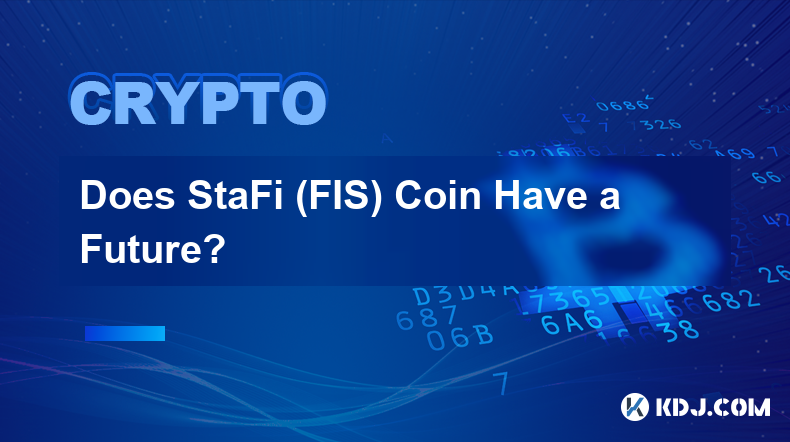-
 Bitcoin
Bitcoin $108,400.6277
0.97% -
 Ethereum
Ethereum $2,504.0387
2.68% -
 Tether USDt
Tether USDt $1.0001
-0.02% -
 XRP
XRP $2.2145
1.44% -
 BNB
BNB $655.3499
0.97% -
 Solana
Solana $153.4879
1.74% -
 USDC
USDC $0.9999
0.00% -
 TRON
TRON $0.2765
0.71% -
 Dogecoin
Dogecoin $0.1697
3.65% -
 Cardano
Cardano $0.5800
2.50% -
 Hyperliquid
Hyperliquid $39.8245
5.84% -
 Bitcoin Cash
Bitcoin Cash $504.0777
2.35% -
 Sui
Sui $2.9175
3.56% -
 Chainlink
Chainlink $13.8028
2.96% -
 UNUS SED LEO
UNUS SED LEO $9.0790
-0.02% -
 Avalanche
Avalanche $18.8435
4.63% -
 Stellar
Stellar $0.2412
0.85% -
 Toncoin
Toncoin $2.9183
2.29% -
 Shiba Inu
Shiba Inu $0.0...01191
2.87% -
 Litecoin
Litecoin $88.1447
2.18% -
 Hedera
Hedera $0.1532
3.45% -
 Monero
Monero $312.4001
0.36% -
 Polkadot
Polkadot $3.5696
4.83% -
 Bitget Token
Bitget Token $4.6313
-0.14% -
 Dai
Dai $0.9998
-0.02% -
 Ethena USDe
Ethena USDe $1.0003
0.00% -
 Uniswap
Uniswap $7.4330
3.96% -
 Pepe
Pepe $0.0...01041
9.01% -
 Aave
Aave $278.6912
6.80% -
 Pi
Pi $0.5337
-0.21%
Does StaFi (FIS) Coin Have a Future?
As a decentralized liquid staking platform, StaFi enables users to access staking benefits while maintaining asset liquidity, capturing a growing share of the DeFi staking market.
Jan 09, 2025 at 10:28 pm

Key Points:
- StaFi ecosystem overview and potential
- FIS token utility and economics
- StaFi's competitive landscape
- Potential growth drivers and challenges
- FAQs on StaFi's future prospects
Does StaFi (FIS) Coin Have a Future?
StaFi Ecosystem Overview and Potential
StaFi is a decentralized finance (DeFi) platform that enables decentralized staking services for PoS (Proof-of-Stake) assets. StaFi's mission is to make staked assets more liquid and accessible for various applications in the DeFi ecosystem.
StaFi provides a range of services, including:
- Liquid Staking: Stakers can deposit supported PoS assets into StaFi, which tokenizes the staked assets into a liquid representation called rTokens. These rTokens can be traded, borrowed, and lent within the DeFi ecosystem.
- Staking as a Service (SaaS): StaFi offers decentralized staking services for enterprise-level projects and institutions. This allows projects to focus on core development while StaFi manages staking operations.
- Meta Staking: StaFi enables users to access a wider range of staking opportunities through collaborations with other blockchains.
FIS Token Utility and Economics
FIS is the native utility token of the StaFi ecosystem. It serves several purposes, including:
- Governance: FIS holders can participate in StaFi's decentralized governance process and vote on proposals that affect the platform's development and operations.
- Rewards: FIS token holders can earn staking rewards by participating in the StaFi staking network.
- Utility: FIS is used for staking, voting, fees, and other transactions within the StaFi ecosystem.
StaFi's Competitive Landscape
StaFi competes with several other DeFi platforms offering staking services, such as Lido Finance, Rocket Pool, and Ankr. However, StaFi differentiates itself through:
- Focus on Liquid Staking: StaFi's core focus is on providing liquid staking solutions, allowing users to access the benefits of staking while maintaining liquidity.
- Cross-Chain Staking: StaFi offers staking services for multiple PoS blockchains, expanding the range of staking options for users.
- Enterprise Staking: StaFi's SaaS offerings cater to the needs of enterprise projects and institutions, providing a secure and efficient means of staking operations.
Potential Growth Drivers and Challenges
Several factors could drive the growth of StaFi and the FIS token:
- Growing Staking Market: The PoS consensus mechanism is becoming increasingly popular, and the overall staking market is expected to continue growing rapidly.
- Strong Ecosystem Support: StaFi has established partnerships with numerous projects and institutions, expanding its reach and credibility within the crypto ecosystem.
- Innovative Products: StaFi continues to develop and launch innovative products and services, such as cross-chain staking and staking derivatives.
However, StaFi also faces certain challenges:
- Competition from Other Platforms: The DeFi staking market is highly competitive, and StaFi needs to continue innovating to differentiate itself from rivals.
- Regulatory Environment: The regulatory landscape for DeFi is evolving, and regulatory actions could potentially impact the StaFi ecosystem.
- Operational Risks: StaFi's protocol and smart contracts are subject to potential operational risks, which could affect the platform's stability and security.
FAQs on StaFi's Future Prospects
- What is StaFi's market share in the DeFi staking market? StaFi is one of the leading staking platforms in the DeFi space, but its exact market share varies depending on metrics used.
- Is FIS a good investment? The future value of FIS depends on various factors, such as the growth of the staking market, StaFi's adoption, and the overall performance of the crypto market.
- What are the main risks associated with StaFi and FIS? The primary risks include competition, regulatory uncertainties, and operational risks related to the StaFi protocol.
Disclaimer:info@kdj.com
The information provided is not trading advice. kdj.com does not assume any responsibility for any investments made based on the information provided in this article. Cryptocurrencies are highly volatile and it is highly recommended that you invest with caution after thorough research!
If you believe that the content used on this website infringes your copyright, please contact us immediately (info@kdj.com) and we will delete it promptly.
- Cryptos, Web3, Growth: What's Hot in the Streets (and on the Blockchain) for 2025
- 2025-06-30 06:30:12
- XRPL Validator Vet Sets the Record Straight: XRP, Not Your Typical US-Based Crypto
- 2025-06-30 06:30:12
- BNB, Maxwell Fork, and BSC Mainnet: Navigating Speed, Stability, and Geopolitical Tides
- 2025-06-30 06:50:12
- Bitcoin Price, Younger Generations, and AI Job Displacement: A Perfect Storm?
- 2025-06-30 07:30:12
- South Korea & Altcoins: Trading Volume Heats Up!
- 2025-06-30 07:30:12
- Pi Network: Navigating Token Price and Selling Pressure in a Buzzing Ecosystem
- 2025-06-30 07:50:12
Related knowledge

How to customize USDT TRC20 mining fees? Flexible adjustment tutorial
Jun 13,2025 at 01:42am
Understanding USDT TRC20 Mining FeesMining fees on the TRON (TRC20) network are essential for processing transactions. Unlike Bitcoin or Ethereum, where miners directly validate transactions, TRON uses a delegated proof-of-stake (DPoS) mechanism. However, users still need to pay bandwidth and energy fees, which are collectively referred to as 'mining fe...

USDT TRC20 transaction is stuck? Solution summary
Jun 14,2025 at 11:15pm
Understanding USDT TRC20 TransactionsWhen users mention that a USDT TRC20 transaction is stuck, they typically refer to a situation where the transfer of Tether (USDT) on the TRON blockchain has not been confirmed for an extended period. This issue may arise due to various reasons such as network congestion, insufficient transaction fees, or wallet-rela...

How to cancel USDT TRC20 unconfirmed transactions? Operation guide
Jun 13,2025 at 11:01pm
Understanding USDT TRC20 Unconfirmed TransactionsWhen dealing with USDT TRC20 transactions, it’s crucial to understand what an unconfirmed transaction means. An unconfirmed transaction is one that has been broadcasted to the blockchain network but hasn’t yet been included in a block. This typically occurs due to low transaction fees or network congestio...

How to check USDT TRC20 balance? Introduction to multiple query methods
Jun 21,2025 at 02:42am
Understanding USDT TRC20 and Its ImportanceUSDT (Tether) is one of the most widely used stablecoins in the cryptocurrency market. It exists on multiple blockchain networks, including TRC20, which operates on the Tron (TRX) network. Checking your USDT TRC20 balance accurately is crucial for users who hold or transact with this asset. Whether you're sendi...

What to do if USDT TRC20 transfers are congested? Speed up trading skills
Jun 13,2025 at 09:56am
Understanding USDT TRC20 Transfer CongestionWhen transferring USDT TRC20, users may occasionally experience delays or congestion. This typically occurs due to network overload on the TRON blockchain, which hosts the TRC20 version of Tether. Unlike the ERC20 variant (which runs on Ethereum), TRC20 transactions are generally faster and cheaper, but during...

The relationship between USDT TRC20 and TRON chain: technical background analysis
Jun 12,2025 at 01:28pm
What is USDT TRC20?USDT TRC20 refers to the Tether (USDT) token issued on the TRON blockchain using the TRC-20 standard. Unlike the more commonly known ERC-20 version of USDT (which runs on Ethereum), the TRC-20 variant leverages the TRON network's infrastructure for faster and cheaper transactions. The emergence of this version came as part of Tether’s...

How to customize USDT TRC20 mining fees? Flexible adjustment tutorial
Jun 13,2025 at 01:42am
Understanding USDT TRC20 Mining FeesMining fees on the TRON (TRC20) network are essential for processing transactions. Unlike Bitcoin or Ethereum, where miners directly validate transactions, TRON uses a delegated proof-of-stake (DPoS) mechanism. However, users still need to pay bandwidth and energy fees, which are collectively referred to as 'mining fe...

USDT TRC20 transaction is stuck? Solution summary
Jun 14,2025 at 11:15pm
Understanding USDT TRC20 TransactionsWhen users mention that a USDT TRC20 transaction is stuck, they typically refer to a situation where the transfer of Tether (USDT) on the TRON blockchain has not been confirmed for an extended period. This issue may arise due to various reasons such as network congestion, insufficient transaction fees, or wallet-rela...

How to cancel USDT TRC20 unconfirmed transactions? Operation guide
Jun 13,2025 at 11:01pm
Understanding USDT TRC20 Unconfirmed TransactionsWhen dealing with USDT TRC20 transactions, it’s crucial to understand what an unconfirmed transaction means. An unconfirmed transaction is one that has been broadcasted to the blockchain network but hasn’t yet been included in a block. This typically occurs due to low transaction fees or network congestio...

How to check USDT TRC20 balance? Introduction to multiple query methods
Jun 21,2025 at 02:42am
Understanding USDT TRC20 and Its ImportanceUSDT (Tether) is one of the most widely used stablecoins in the cryptocurrency market. It exists on multiple blockchain networks, including TRC20, which operates on the Tron (TRX) network. Checking your USDT TRC20 balance accurately is crucial for users who hold or transact with this asset. Whether you're sendi...

What to do if USDT TRC20 transfers are congested? Speed up trading skills
Jun 13,2025 at 09:56am
Understanding USDT TRC20 Transfer CongestionWhen transferring USDT TRC20, users may occasionally experience delays or congestion. This typically occurs due to network overload on the TRON blockchain, which hosts the TRC20 version of Tether. Unlike the ERC20 variant (which runs on Ethereum), TRC20 transactions are generally faster and cheaper, but during...

The relationship between USDT TRC20 and TRON chain: technical background analysis
Jun 12,2025 at 01:28pm
What is USDT TRC20?USDT TRC20 refers to the Tether (USDT) token issued on the TRON blockchain using the TRC-20 standard. Unlike the more commonly known ERC-20 version of USDT (which runs on Ethereum), the TRC-20 variant leverages the TRON network's infrastructure for faster and cheaper transactions. The emergence of this version came as part of Tether’s...
See all articles

























































































